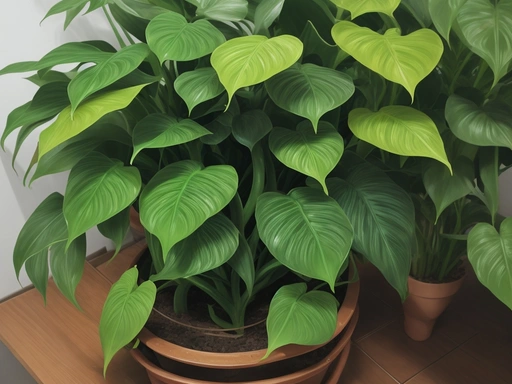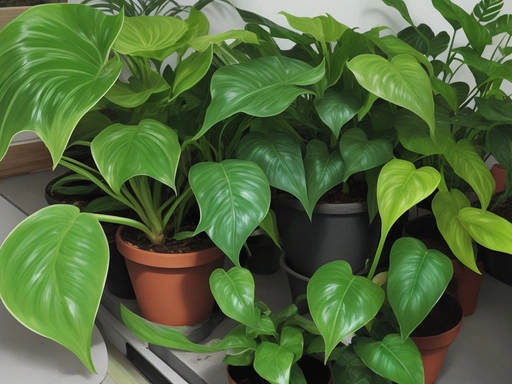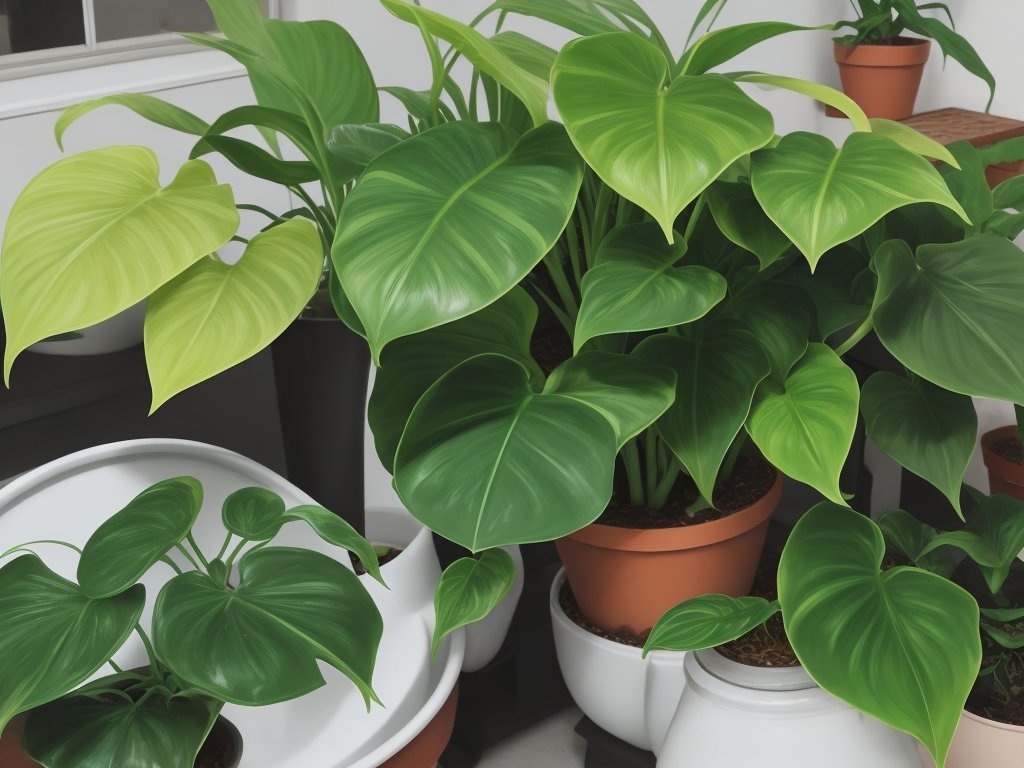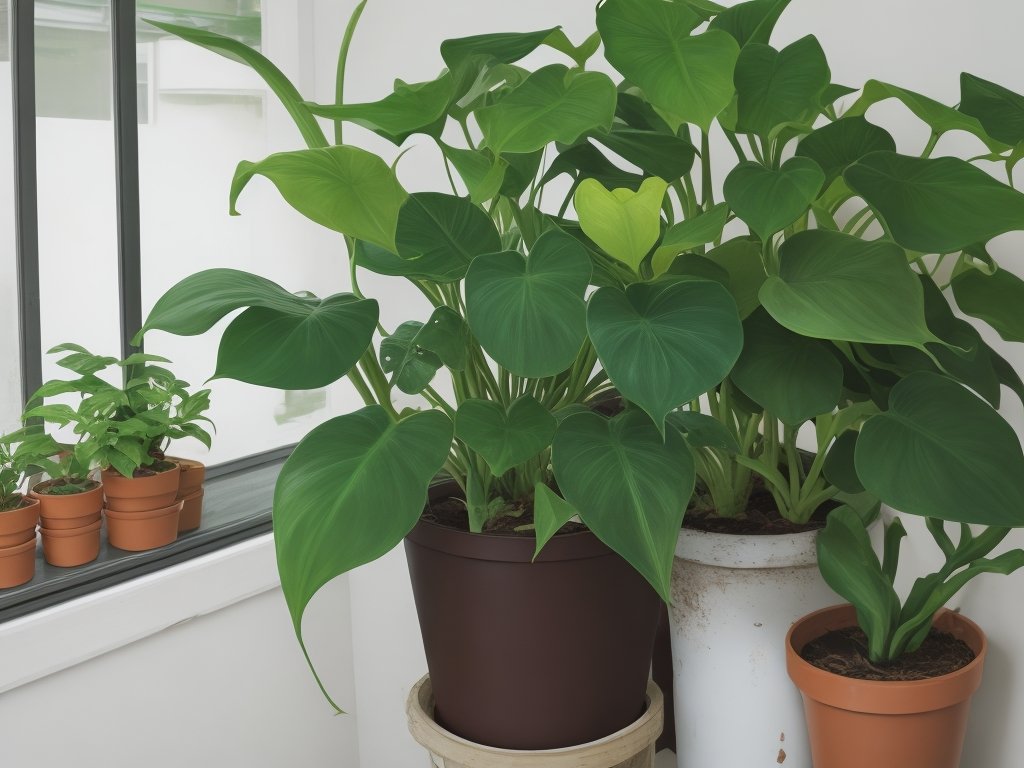Philodendron Air-Purifying Benefits: A Breath of Fresh Air!
Key Takeaways:
- Philodendron plants can help improve indoor air quality by removing toxins such as formaldehyde and benzene.
- These plants can also increase humidity levels in your home, helping to combat dry air.
- Philodendrons are low-maintenance and easy to care for, making them a popular choice for indoor gardens.
- Having philodendron plants in your space can not only enhance the aesthetic but also contribute to a healthier living environment.
Did you know that you can enhance the air quality in your home or office simply by adding a few Philodendron plants?
Yes, you heard that right! Philodendrons, those lush, green beauties, not only brighten up your space but also work wonders in filtering out harmful pollutants from the air.
In this article, we’ll delve into the fascinating world of Philodendrons and their air-purifying benefits.
I’ll explain the science behind their air purification abilities and share tips on how to maximize their effectiveness.
So, get ready to breathe in some fresh, clean air with the help of these incredible plants!
| Philodendron Varieties | Air-Purifying Benefits |
|---|---|
| P. cordatum (Heartleaf Philodendron) |
|
| P. selloum (Hope Philodendron) |
|
| P. bipinnatifidum (Split-Leaf Philodendron) |
|
| P. domesticum (Spade-Leaf Philodendron) |
|
| P. erubescens (Blushing Philodendron) |
|
What is a Philodendron?
Philodendron is a type of tropical plant known for its lush green foliage and trailing vines. There are various species of Philodendron, each with its own unique characteristics.
Definition and description of Philodendron plants
Philodendron plants are popular houseplants known for their attractive foliage and air-purifying abilities. They belong to the Araceae family and are native to tropical regions of the Americas.
Philodendrons have heart-shaped leaves that come in various shades of green, with some species displaying variegated patterns.
These plants are easy to care for and can thrive in both lowPhilodendrons are healthyt light conditions. They are also known for their trailing or climbing habits, making them great for hanging baskets or training on moss poles.

Popular species of Philodendron
Popular species of Philodendron include the Philodendron scandens, Philodendron hederaceum, Philodendron bipinnatifidum, and Philodendron selloum.
These varieties are cherished for their lush foliage, easy care, and ability to thrive indoors.
They are commonly used as decorative plants in homes and offices.

How do Philodendrons purify the air?
Philodendrons naturally clean the air by filtering out harmful pollutants through a process called phytoremediation.
Explanation of the science behind air purification
Air purification works by removing airborne pollutants and improving indoor air quality. Philodendron plants contribute to this process through a natural mechanism called phytoremediation.
They absorb pollutants such as formaldehyde and benzene through their leaves and roots, converting them into harmless substances.
This helps to create a healthier and cleaner environment indoors.
Specific ways in which Philodendrons filter air pollutants
Philodendrons filter air pollutants primarily through their leaves. They have tiny openings called stomata that allow them to take in carbon dioxide and release oxygen during photosynthesis.
As part of this process, they also absorb and break down indoor air pollutants such as formaldehyde, benzene, and xylene.
In addition, their large, lush leaves provide a surface area for particles to adhere to, helping to remove dust and other airborne contaminants.

Benefits of having Philodendrons indoors
Having Philodendrons indoors can offer several benefits.
They improve air quality by filtering out harmful pollutants like formaldehyde and benzene.
Philodendrons also release oxygen, making the air fresher and easier to breathe.
Compared to other indoor plantsadds a touch of natural beauty to your indoor space, creating a calming and relaxing environment.

Philodendrons and their impact on indoor air quality
Philodendrons have a positive impact on indoor air quality.
Studies and research on Philodendrons’ air-purifying abilities
Studies and research have shown that Philodendrons have air-purifying abilities.
They are capable of filtering out harmful pollutants such as formaldehyde, benzene, and trichloroethylene from the air.
These plants effectively absorb these toxins through their leaves, helping to improve indoor air quality and creating a healthier environment.
Comparison of Philodendrons with other indoor plants in air purification
Philodendrons are excellent indoor plants when it comes to air purification.
They have the ability to filter harmful pollutants from the air, such as formaldehyde, benzene, and xylene.
Compared to other indoor plants, Philodendrons are known to be effective in removing these substances and improving indoor air quality.
Ideal placement of Philodendrons for maximum air-purifying benefits
To maximize the air-purifying benefits of Philodendrons, place them in well-lit areas with good airflow, such as near windows or in open spaces.
Best locations within a home or office for Philodendrons
Philodendrons thrive in locations with bright, indirect light.
Ideal spots in homes include well-lit living rooms, bedrooms, or near windows.
In offices, placing them near a window or under fluorescent lights work well.
Just make sure to keep them away from direct sunlight to avoid burning the leaves.
Factors to consider for optimal air filtration by Philodendrons
To maximize air filtration by Philodendrons, consider the following factors:
- Choose the right species: Philodendron scandens, P. selloum, P. erubescens, and P. hederaceum are known for their air-purifying abilities.
- Place the plants strategically: Position Philodendrons near potential sources of pollutants, such as furniture, carpets, or smoking areas.
- Provide adequate light: Philodendrons require moderate to bright indirect light for optimal growth and air purification.
- Ensure proper watering: Overwatering can lead to root rot and hinder filtration, so water your Philodendrons only when the top inch of soil is dry.
- Maintain good airflow: Philodendrons benefit from gentle air circulation, which helps distribute pollutants towards the plant leaves for filtration.
- Regularly clean the leaves: Dust particles on the leaves can reduce their air-purifying effectiveness, so wipe them gently with a damp cloth.
Caring for Philodendrons to enhance air purification
To enhance air purification with Philodendrons, proper care and maintenance are key.
Essential tips for Philodendron care and maintenance
To ensure your Philodendron thrives and enhances air purification, here are some essential care tips:
- Light: Place your Philodendron in bright, indirect sunlight. Avoid direct sunlight as it can scorch the leaves.
- Watering: Water your Philodendron when the top inch of soil feels dry. Avoid overwatering, as this can lead to root rot.
- Humidity: Philodendrons love humidity. Mist the leaves regularly or place a humidifier nearby to maintain optimal humidity levels.
- Soil: Use well-draining soil that retains some moisture. A mix of peat moss, perlite, and a little bit of sand works well.
- Fertilizer: Feed your Philodendron with a balanced houseplant fertilizer during the growing season (spring and summer. Follow the instructions on the packaging for proper dosage.
- Pruning: Trim any leggy or yellowing leaves to encourage new growth. You can also prune to shape your plant or control its size.
- Repotting: Repot your Philodendron every two years or when it outgrows its pot. Choose a slightly larger container with fresh soil.
- Pest control: Keep an eye out for common houseplant pests like aphids, mealybugs, and spider mites. Treat any infestation promptly using organic insecticidal soap or neem oil.
- Temperature: Philodendrons prefer temperatures between 65-85°F (18-29°C. Avoid extreme cold or hot drafts.
How proper care affects the air-purifying abilities of Philodendrons
Proper care ensures that Philodendrons are healthy and thriving, which directly impacts their air-purifying abilities.
When these plants are well-maintained, they have healthier leaves and stronger root systems, allowing them to effectively filter out airborne pollutants.
Watering, light, and humidity are key factors in providing optimal care.
Frequently Asked Questions
How many Philodendron plants are required to purify the air in a room?
The number of Philodendron plants needed to purify the air in a room depends on various factors such as the size of the room, the level of air pollution, and the specific species of Philodendron.
As a general guideline, having at least one Philodendron plant per 100 square feet of space can be effective in improving indoor air quality.
However, it’s always beneficial to have more plants for better air purification.
Can Philodendrons remove allergens from the air?
Yes, Philodendrons have the ability to remove allergens from the air. They can filter out common allergens like dust, pollen, and mold spores, helping to improve indoor air quality.
Philodendrons do this by absorbing these particles through their leaves and roots, effectively trapping them and reducing their presence in the air.
Do Philodendrons release any harmful substances into the air?
No, Philodendrons do not release any harmful substances into the air. In fact, they are known to improve indoor air quality by filtering out pollutants and releasing oxygen.
So, you can enjoy their beauty without worrying about any negative effects on the air you breathe.
Final Verdict
Philodendrons are not only beautiful and low-maintenance plants, but they also have remarkable air-purifying abilities. Through a process called phytoremediation, Philodendrons filter and remove harmful pollutants from the air, making them an ideal addition to any indoor space.
Scientific studies have shown that Philodendrons can effectively remove toxins such as formaldehyde, benzene, and xylene, improving indoor air quality and promoting better health.
To maximize their air-purifying benefits, place Philodendrons in well-lit areas and provide them with proper care and maintenance. So, why not bring a Philodendron into your home or office and breathe easier with cleaner, fresher air?







